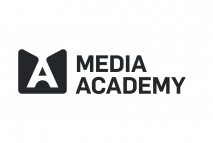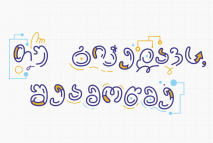What should we know about digital broadcasting
Replacement of the analogue terrestrial broadcasting by the digital one will take place from 2015. Possibilities of effective utilization of the frequency resources have been demonstrated by the development of telecommunication technologies all over the world; therefore, most of the developed countries today are using digital TV instead of the analogue one.
Transition to new format broadcasting is a wide-scale reform of the state importance that is being carried out in line with the action plan and recommendations defined by the Government.
The reform will cover all the citizens of Georgia except the users of cable, satellite and internet-TV.
The goal of the reform:
- Effective utilization of limited natural resource – TV and radio frequencies;
- Media pluralism and freedom of expression;
- Formation of the competitive environment on media market;
- Provision of diversified and high-end broadcasting for the customers;
- Development of the informational society;
- Attraction of investments and introduction of the European standards in this field.
The foregoing reform will promote the introduction of new possibilities – the customers will be able to plan watching of own desired program; use the electronic catalogue of programs and even more, use the reminder option.
Audio description and subtitles will be considered for persons with disabilities.
What will be changed for the subscribers of analogue broadcasting?
In result of single payment, you’ll be permanently provided with diverse and high-end TV programs continuously.
What kind of antenna can be used?
Digital TV signal can be received with the same antenna, you used for receiving of analogue signal. It may be the roof attached antenna, directed to the TV transmitter; in rare cases even the home antenna can be used.
What kind of TV set is used to receive the digital signal?
The families having the TV sets receiving only analogue signal, will need to purchase digital signal receiver device – “set-top-box”.
Only the owners of the TV set without RCA cable output will need to replace it with a new one.
Those, who want to buy modern TV-set with functionality relevant to the technical requirements document defined for digital TV-s in Georgia, will only need to set the parameters.
What kind of cables do we need?
To receive the digital TV signal you will need: coaxial (copper) and RCA cable connectors.
Coaxial (i.e. copper) cable incoming from the antenna is connected to the set-top-box, which in its turn is connected to the TV set through RCA cable connector. If you have modern TV set you can use as RCA as well as HDMI cable connector.
What is “set-top-box” and what is it used for?
To receive the terrestrial digital TV signal you will need TV set connector device, so called “set-top-box”, transforming standard and HD signals into the analogue format.
The functionality of set-top-boxes imported to the Country should meet the standards provided in the documentation of technical requirements.
What benefits will socially vulnerable families have?
During the process of transition to the terrestrial digital broadcasting, the government pays great attention to socially vulnerable families. Provision of the subsidies is one of the most important components of the reform.
For socially vulnerable families, with a rating score 70 000 or less, the government will procure certified set-top-boxes and distribute them in regional service-centers of “Georgian Post”.
The State will ensure delivery of the set-top-boxes at residential address of the families of persons with disabilities.
Where can we buy “set-top-box”?
You can buy “set-top-box” at consumer electronics stores.
Frequently Asked Questions
What differs SH (standard definition) and HD (high definition) programs?
The average speed of SH and HD programs is 2.16 Mbit/s and 5 - 8 Mbit/s relatively, depending on the type of broadcasted program. Normally, high speeds are used for broadcasting of HD sport programs.
Which programs we’ll be able to watch after switching to digital broadcasting?
After switching to digital broadcasting you’ll be able to watch all programs of Public Broadcaster including – First and Second Channels and Adjara Public Broadcaster. As for commercial carrier, it will broadcast all existing open-air national programs including “Rustavi 2”, “Imedi”, “First Stereo” etc.
Will the population within non-coverage area be subsidized with satellite dishes and receivers from the fund of digital migration?
The Digital Switchover Fund as well as the Agency serves exclusively to terrestrial TV broadcasting, excluding the subsidies for cable or other kind of TV services. The subsidy itself is considered only for socially vulnerable families. As for the coverage, after the network optimization, the broadcasting signal will be transmitted to the families that today are in non-coverage area.
Why the broadcasting network is not planned for “home antenna” receiving?
Such planning will cause the increase of the expenses of network construction for the State as well as for the investors that is not reasonable at the first stage. Over time, the network will be modernized and expanded.
How are regulated the issues of concentration and the access of competitive programs to the platform of broadcasters in case of their uniting ?
The issues of concentration are regulated by creation of alternative platform for local and national broadcasters. As for the access for the competitors’ programs to the broadcaster’s network, it is regulated in compliance with “must carry” principle. All network/multiplex platform carriers will be obliged to provide access to its platform for an open-air broadcaster, notwithstanding its preferences.
Is it possible to receive analogue and digital broadcasting simultaneously?
Yes, it is, if set-top-box is compatible with both technological platforms.
What kind of cable shall we need for digital TV and if old coaxial (copper) TV cable will be useful?
To receive digital signal you’ll need: coaxial (copper) and RCA connecting cables. Coaxial i.e. incoming copper cable is to be connected to the set-top-box that in its turn will be connected to the TV-set via RCA connecting cable. If you have a modern TV set, you can use both RCA as a HDMI connecting cables.
Why are we switching to digital broadcasting?
Possibilities of effective utilization of the frequency resources have been demonstrated by the development of telecommunication technologies all over the world; therefore, most of the developed countries today are using digital TV instead of the analogue one. Switching to the terrestrial digital broadcasting is the international obligation of ITU (International Telecommunication Union) member-countries, including Georgia, within the framework of Geneva Agreement (GE-06) signed in 2006. By signing this agreement (regulating the norms, terms and coordination for utilization of digital and analogue radio frequency resources), the Government of Georgia has defined main direction of the State Policy for switching to the terrestrial digital TV broadcasting.
Is it possible to connect one “set-top-box” to two or more TV sets?
Yes, but you’ll have the same programs in all TV sets.
I’m socially vulnerable, shall I have any privilege?
One of the priorities of the Government is to subsidize socially vulnerable families in the process of the reform. Subsidizing of socially vulnerable families within the frames of the reform is one of the priorities of the Government. For socially vulnerable families, with a rating score 70 000 or less, the government will procure certified set-top-boxes and distribute them in regional service-centers of “Georgian Post”. The State will ensure delivery of the set-top-boxes at residential address of the families of persons with disabilities.
What is the benefit of migration to the terrestrial digital TV broadcasting?
Digital TV gives an opportunity to transmit more programs: approximately fifteen standard definition programs in the channel of frequencies that currently is used for only one analogue program. Digitalization of terrestrial TV broadcasting for customers will ensure better quality voice and image, availability of more radio and TV programs, services, possibility to receive portable and mobile programs and will increase the potential to deliver informational community services. Switching to digital platform will enable service providers to create program content, meeting the requirements of different groups of the audience. In long-term perspective, it will decrease the broadcasting costs of the service providers and ensure their flexibility at the national and local broadcasting levels. The State will also benefit by reduction of the radio frequencies used on digital platform and increase of their effective application. Considering the current trends in the world and the European practice, in mid-term perspective, part of the broadcasting frequencies (in particular, 800 MHz range from 2014 and 700 MHz range after 2015) will be applied for introduction of wireless broadband technology, facilitating the formation and future development of the informational society all over Georgia.
What are the terms and phases for migration to digital broadcasting?
For the first region of International Telecommunication Union (ITU) (including Georgia together with Europe, Africa and great part of Asia), June 17, 2017 was defined as the deadline for switching to digital terrestrial broadcasting, meaning that after this date, the analogue TV signals operating in the Country will not be legally protected from interference coming from neighboring countries. From March 17 to June 17,2014 TV programs will be transmitted both via analogue and digital signals. During this period you can already use set-top-boxes.
Why didn’t the Government grant Public Broadcaster the frequency resources or/and the license on application of the resources?
In analogue broadcasting mode, one program was broadcasted by one broadcasting channel, the holder of one license. The functions of the network carrier and content provider were divided by introducing the digital broadcasting. Currently the activity of the networks and multiplex platform carrier are regulated by the Law on Electronic Communications and the program/content carrier activity is regulated by the Law on Broadcasting. The content producer holds full editing responsibility for the programs developed by it that will be delivered to the end-user by the network carrier, the holder of the license and corresponding frequency resource. The Public Broadcaster, as a content producer has not obligation to deliver information to the population in emergency and force-majeure situations. This is the obligation of the Government of Georgia. Considering the above stated, the Government made decision to fulfill this obligation by providing the independent network infrastructure for transmitting of the programs by the National Broadcaster and other National Broadcasters.
Are there any negotiations on application of frequency resource held with neighboring countries including Russia?
Georgia as well as all other countries is entitled to held negotiations with its neighbors on utilization of frequency resources. Georgia carries out this activity through the International Telecommunication Union (ITU) and it is a prerogative of Georgian National Communication Commission.
Should the Operation Rules Document include the issues of priorities and access to the mux platform, tariff calculations and the conformity model?
The Operating Rules is a pure technical document and it is seen from its content. It is available for everyone and is uploaded on the web-site of the Ministry of Economy as well. The access to the mux platform is regulated by the law, as for tariff calculation model this is a prerogative of the Georgian National Communication Commission.
In which format should the broadcaster deliver its content/program to the network carrier?
The broadcasters should deliver standard and high definition non-modulated non-multiplexed TV signals to the so called “Headend”. HD signal should be transmitted in the format of HD-SDI interface, complying to SMPTE 292 M standard, with 1.485Gb/s nominal speed of data transmission and standard definition signal should be transmitted in the format of SD-SDI interface, complying to SMPTE 259 M standard with 270 Mbit/s nominal speed of data transmission. The relevant list of programs in XML extension should be also delivered to so called “Headend” by the broadcasters for Electronic Program Quidelines (EPG).
Wouldn’t it be reasonable to release Public Broadcaster from political, commercial influence and State control, so it will become the frequency holder and network owner?
The reason of construction of an independent state network and multiplex platform was the possibility to manage reasonably emergency and force-majeure situations in the country. In case of emergency situation in the country, the broadcaster’s program temporarily suspends and emergency special announcement appears on the Screen. This is the obligation of the State to the population and neither Public Broadcaster nor any other carrier can be responsible for it. The functions of network carrier and program producer are divided according to the law; the control over the content may be executed only by the Public Broadcaster, because it is the only responsible body for editing the content. In this model the state assumes the responsibility for network performance.
Will the State ensure installation of the set-top-boxes?
The Government works on this issue and you’ll be notified on its decision in the nearest future, though it should be noted, that you can simply connect the device with your TV set, using the instruction attached to the set-top-box. In addition to this, informational brochures will be disseminated in population (several times), providing precise information how to connect set-top-box with a TV set. Information will be also promoted by means of TV video spots and printed media.
What is the price of “set-top-box”?
The price of set-top-boxes will be regulated by the market.
Can we use satellite dish (parabolic antenna) or receiver?
No, you can’t.
How can we receive set-top-box?
After getting the notification, individuals having the status of “socially vulnerable” have to go to the Georgian Post service-center and get the set-top-boxes upon presenting their ID card.
Do we need to change TV set?
The families, having TV sets receiving only analogue signal will need to purchase digital signal receiving equipment - “set-top-box”. Only the users having TV sets without the jack for RCA cable, will need to replace their TV sets. Those who want to buy modern TV set with functionality relevant to the document on technical requirements for digital TV sets in Georgia will only need to reset parameters.
What is “set-top-box” and where we can buy it?
To receive the terrestrial digital TV signal you will need TV set connector device, so called “set-top-box”, transforming standard and HD signals into the analogue format. You can buy “set-top-box” at the consumer electronics stores.
Which antenna should be used to get digital signal?
Digital TV signal can be received by the same antenna, we used for analogue signal. It can be an antenna installed on the roof of the building, directed to the TV transmitter; in rare cases it is possible to use inside (home) antenna.
To whom this process applies?
The reform equally applies to all the families, except the consumers of cable, satellite and internet TV users.
Terms and Abbreviations
Analogue Broadcasting- terrestrial TV and radio broadcasting which is transmitted through analogue signal. Before switching to digital broadcasting, the broadcasting used to be transmitted through analogue signals only.
Encoding - TV content encryption process using protective mechanisms (electronic key), which makes it impossible to be used by others and only authorized users are able to receive signals with corresponding key.
The Regulatory Body- the National Broadcasting Regulatory Authority, grants licenses to the broadcasters and makes sure they fulfill their commitments and obligations, imposes sanctions for violations, coordinates and promotes the development of broadcasting system.
Receiving Equipment- necessary equipment needed for receiving broadcasting programs.
Multiplex- Transmission system which unites several TV channels into a single digital stream.
Direct Satellite TV Broadcasting- broadcasting that receives signals through satellite dish or antenna in the house conditions.
International Telecommunication Union (ITU)- the United Nations specialized agency which coordinates terrestrial and satellite telecommunications standards and their development throughout the world.
Satellite Dish- an antenna designed to receive satellite signals that focuses on parabolic reflector.
Satellite Cable TV with Collective Receiver- community satellite TV system for tenant groups (multi-storey building) using single dish.
Full Coverage- the full broadcasting coverage of subscribers in any given region.
Electronic Program Guide- electronic schedule displaying the programming net or content of the TV broadcaster on the screen.
Telecommunications Operator/ Internet Provider- an organization that supplies subscribers with social telecommunications services (networks, telecommunications, internet..). An operator is usually responsible for signal transmission and not for the content.
Digital Multichannel Sound System- a format used by modern cinematography. It gives system a possibility for mono, smooth and flexible transfer and is ideal for handling over or to be watched at home.
Digital TV Standards -international standards of digital TV transmitting and receiving digital signals.
Digital TV Broadcasting Standards - international standards of digital TV transmitting and receiving digital signals. The first generation standards are following: DVB-S (satellite), DVB-C (cable), DVB-T (terrestrial); the second generation standards are: DVB-S2 (satellite), DVB-C2 (cable), DVB-T2 (terrestrial), and they represent the optimal solution of high definition broadcasting increasing an amount of transmitted channels by 30-50%.
Digital TV Connector (set-top-box) – special equipment, that delivers standard or high-definition signals transmitted through antenna to TV set.
Digital TV – TV broadcasting, transmitting images and sounds through digital data stream.
Digital TV Platform –Technical services and data transmission network that ensures broadcasting distribution to consumers.
UHF – Ultra High Frequencies
VHF – Very High Frequencies
EBRD –European Bank for Reconstruction and Development
HD – High Definition
IDFI – Institute for Development of Freedom of Information
HEADEND – master facility that ensures content compression, its encoding, multiplexing and delivery to distribution network
Content– content, subject matter, associated with broadcasting product.
Source: http://digitaltv.ge/eng/faq/269










